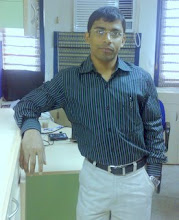Most widely preferred molecules:
1. Saccharine (controversy over its safety primarily on findings of bladder tumours in rats with excess of sodium saccharine)
2. Aspartame
a. Now largest molecule in the global market having 50% market share in the artificial sweetener market
b. Preferred sweetener in diet beverages and dairy products
c. Aspartame is made by joining two protein components, aspartic acid and phenylalanine, and a small amount of methanol
d. Because of its lack of heat stability, there are some limitations to its expanded use, especially for bakery and confectionery products
3. Sucralose
a. Available in India by the brand name ZERO and SUGARITE
b. Used primarily in
i. tabletop sweeteners
ii. beverages
iii. baked goods
iv. breakfast cereals
v. frozen and other desserts
vi. toppings
vii. fillings and puddings
viii. Gum
ix. breath fresheners
x. fruit spreads
xi. salad dressings
xii. confectionery
xiii. processed fruit and vegetable products
xiv. alcoholic beverages
c. Some reports on the adverse reactions of sucralose allege that it shrinks the thymus gland and enlarges the liver and kidney
4. Acesulfame-k & stevioside
a. Ace-K is a sweetener approved only in the U.S. and the EU and is used primarily in candy and tabletop sweeteners
b. Stevioside is a natural sweetener
c. Marketed in India under the brand name STUGAR
i. Primarily used in soft drinks and alcoholic beverages
Drivers of the artificial sweetener market
· Confectionery market: Rs 16,000 million in 2005
o Sugar free chewing gum market
§ In India, the sugar free chewing gum market penetration is 15% only, where in Spain the penetration is 99%, showing a huge potential of the artificial sweeteners in the Indian gum market
o Sugar free candies
§ New concept in India, but penetration rate is 29% in Japan and 28% in Singapore but the concept is entering into India
o Major players in Indian confectionery market:
§ Perfetti Van Malle
§ Lotte
§ Wrigley’s
§ Cadbury
§ Amul
· Sugar free Ice cream (future scope)
· Sugar free chawanprash (already has hit the Indian market by Ranbaxy)
· Sugar free honey (by Dabur)
· Fear of obesity among the young population
· Fear of Diabetes (WHO forecasts for 80 million diabetic patients in India, the highest in the world, by 2030)
· Attempts to develop foods for diabetic patients
· Worries over dental caries
· Product introductions in the diet food & beverage category such as diet drinks, diet candies, diet gums, and diet ice creams
Players in the artificial sweetener market
· Zydus Cadila
o Sugar free gold (Aspartame)
o Sugar free natura (Sucralose)
o Sugar free delite (low calorie health drink with electrolytes and vitamins)
· Merisant’s EQUAL
· Alembic’s ZERO
· Boot’s SWEETEX
Artificial sweetener market
· Market size: Rs. 1,000 million (March 2007)
· Forecasted to grow at the rate of 15-20% till next 5 years
· Penetration among Indian population: 3%
· Market share of SUGAR FREE: 75%
o Planning to capture market share of 80% by Mar 2008
o Advertisement spend: Rs. 150 million
§ Planning to increase advertisement expense by 20% to achieve 80% market share
o Planning to position SUGAR FREE as an “alternative to sugar” in day to day cooking, with chef Sanjeev Kapoor as brand ambassador
o Planning to expand into the big brands of FMCG market to manufacture their product by using SUGAR FREECompany is also planning for campaigns in the metros setting up exclusive Sugar Free shops to show how confectioneries can be made using Sugar Free. For this campaign to be successful company is looking at big confectionery shops esp in Kolkata, as it is a big market for Misthis and Rassagollas
Saturday, February 16, 2008
Subscribe to:
Post Comments (Atom)

1 comment:
Hi sir ,
This is balaji from chennai pursuing PhD on suagr free sweetners buying behaviour
could you please help me in getting data pertaining to sugar free sweetners
Post a Comment